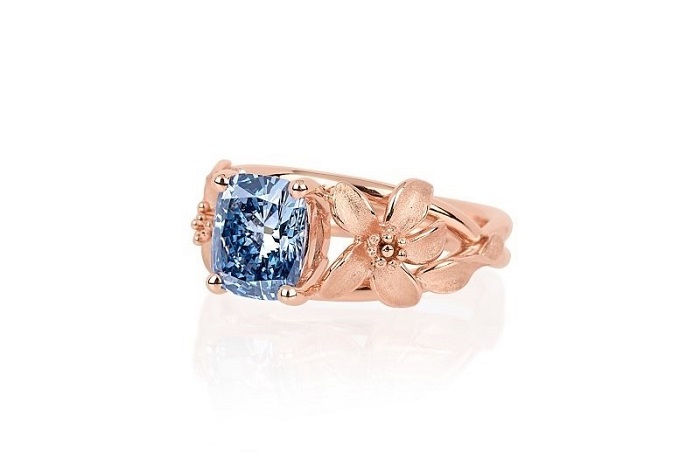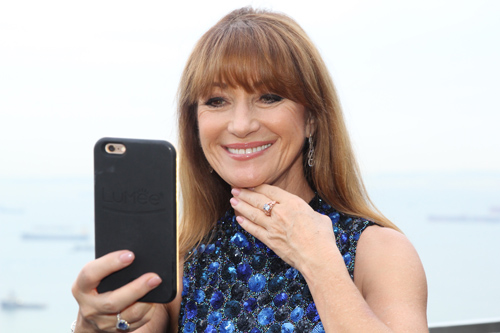Let’s go ahead and get this ring made… I got a girl to marry!
Let’s go ahead and get this ring made… I got a girl to marry! :-)
RN

Let’s go ahead and get this ring made… I got a girl to marry! :-)
RN

As more of us move toward ordering jewelry online, we run particular risks. Of course, its critical to find a trustworthy jeweler with an impeccable reputation (have you seen our reviews lately?).
Also important? Finding a piece of jewelry that fits properly. Sure, you can work with most jewelers to adjust the size but isn’t it great when you get it right the first time? It saves you time, money and hassle.
This great little article in Sundrop Jewelry details the perfect way to size your wrist:
- Measure your wrist: Take a flexible measuring tape, strip of paper, or piece of string, and wrap it around your wrist below the wrist bone where you would normally wear a bracelet.
- If you used a strip of paper or string, mark it where the end meets. Then measure it with a ruler. (If you don’t have a ruler, print out your own at printable-ruler.net)
- This is your wrist size. But don’t order just yet! If you bought a bracelet that was exactly the same length as your wrist size it would be too small – you need a little slack to account for the thickness of the beads, and to fasten the clasp.
- To find your bracelet size, you have to add a little more length. Depending on the fit you desire, add this to your wrist size:
- Snug fit – add 1/4” to 1/2″
- Comfort fit – add 3/4” to 1″
- Loose fit – add 1” to 1 1/4″

What a ring! What a shade of blue!
Russian conglomerate World of Diamonds just unveiled an incredible blue diamond ring. Their 2.08 fancy vivid blue cushion shaped diamond is set in a platinum setting and plated in rose gold, and is named ”The Jane Seymour” Diamond after the famous Bond girl.
According to Naturally Colored:
The ring celebrates the illustrious career and philanthropic efforts of Jane Seymour, an accomplished actress, producer, painter, businesswoman, philanthropist and Officer of the Order of the British Empire (although it is unclear whether the funds from the ring will go toward philanthropy or to WOD).
We hope the price tag doesn’t make you blue:


It’s that time of year again, where we don our summer best, looking fashionable and trying to stay cool. And this is no easy feat. Some jewelry is particularly vulnerable to the effects of summer (salt water, chlorine, etc). By taking a few simple precautions, you can have your summer fun without it taking a toll on your fine jewelry.
The biggest piece of advice?
Take it off!
When it comes to summer activities, most do not require a statement necklace. Whether it’s swimming, hiking, gardening or camping, you risk losing your jewelry during a physical activity…and we don’t want that! We suggest bringing a special case for your jewelry pre-activity or better yet, leave it at home and look smashing at night!
Remember: chlorine, saltwater, sunscreen, direct sunlight and even sweat can affect gems and metals.
If you do expose your jewelry to summer’s hazardous material, remember that cleaning your jewelry doesn’t require special accessories. A bowl of water with a few drops of dish detergent usually does the trick. Dry gently using a soft cloth.
This is our Scroll Solitaire engagement ring, a gorgeous favorite, with a beautiful diamond and a rich history.
To see the complete custom design process:
Our cuts come in both Antique Cushion Cut (ACC) and Old European Cut (OEC). They are cut to specific parameters to ensure maximum brilliance and beauty. Our cushion cuts are available in three length to width ratios: square, slightly elongated and elongated.
So what exactly is an Old European Cut (OEC)?
The Old European Cut is considered the forerunner of the modern day brilliant cut, since both are round cuts. It became the most popular during the 19th century, following on the historical heels of a cushion cut (or “old miner’s cut”) but with a shallower pavilion, a more rounded shape and a different arrangement of the facets.
The Old European and Modern Round Brilliant both have 57 or 58 facets–but it’s the placement and shape of those facets that really define each cut’s personality.
What are the differences between an OEC and Round Brilliant Cut?
The Old European Cut doesn’t appear as perfectly round as the Round Brilliant Cut. The Old European Cut also has larger facets (as well as a large hole, slightly off center). And while the Round Brilliant Cut optimizes the amount of brilliance, the antique OEC cut gives off a more understated and elegant glow.
An Old European Cut diamond typically has a smaller table and higher crowns than the modern day Brilliant counterpart. Another distinctive characteristic of the OEC is the culet. Instead of having a pointed end at the bottom, an OEC has an open culet. (This creates a flat facet instead of a sharp point.)
We love pearls and we carry them for one good reason: they can be worn with just about anything, all the while maintaining their “classic fashion” status (meaning you can’t go wrong giving them as a gift, right?).
But like other jewelry, there are some loose rules to follow when donning them. This video tutorial gives great (and simple) pointers to follow (or not, because we love you fashion rule breakers out there too!)
 |
Freshwater Cultured Pearl Necklace Freshwater Cultured Pearl Necklace, 10mm-11mm, 18″ long with a sterling silver clasp. Available in: |
Video 2, sapphire on the left
#1 = natural green sapphire
#2 = light green moissanite, native color, not enhanced
#3 = medium green moissanite, native color, not enhanced